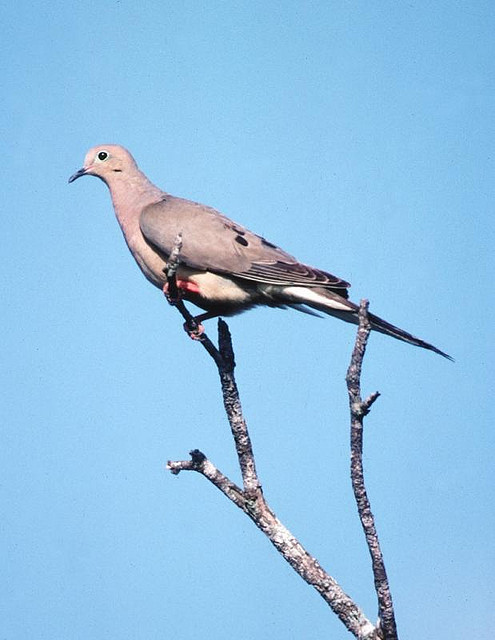Research | Hunting: Reporting Banded Doves
Tuesday, September 2nd, 2014This is Passport to Texas
An important game bird in Texas, the mourning dove (although there are other dove species in Texas) is the subject of a nationwide banding program. By crimping tiny silver bands around their legs, biologists track the harvest rates of these birds.
08—We’ll also determine survival rates, where they go, when they get there, and when they leave. And all kinds of good information.
Jay Roberson… wildlife research supervisor at Parks and Wildlife…says the bands are small, but packed with information.
13—And it has the toll free number on it that people can call. And a nine digit number and the office location of the bird banding lab in Laurel Maryland.
Newer bands even have a website where hunters can report their findings. Roberson asks dove hunters to examine their harvest for leg bands. The information on the bands hunters supply is invaluable when managing the species.
19—All the work we put in on banding doves is for naught, if they’re not reported by hunters or people who find them. And, it’s very important that hunters check their birds that they bag – make sure that their birds are banded. If they are, we ask they report the number to the toll-free number: 1-800-327-BAND.
Find more information about reporting dove data when you visit the Texas Parks and Wildlife website.
Our show’s receives support from the Wildlife and Sport Fish Restoration Program, which provides funding for the Private Lands and Public Hunting Programs.
For Texas Parks and Wildlife…I’m Cecilia Nasti.




 Passport to Texas is a
Passport to Texas is a  Passport to Texas is made available by:
Passport to Texas is made available by: